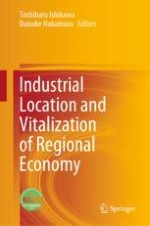2023 | OriginalPaper | Buchkapitel
9. Roles of Education in Expenditure Inequality between Urban and Rural Areas: Indonesia, the Philippines, and India
verfasst von : Mitsuhiro Hayashi
Erschienen in: Industrial Location and Vitalization of Regional Economy
Verlag: Springer Nature Singapore
Aktivieren Sie unsere intelligente Suche, um passende Fachinhalte oder Patente zu finden.
Wählen Sie Textabschnitte aus um mit Künstlicher Intelligenz passenden Patente zu finden. powered by
Markieren Sie Textabschnitte, um KI-gestützt weitere passende Inhalte zu finden. powered by
